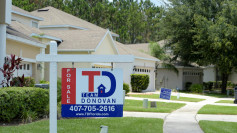Property markets were at the peak during 2009, when it was suddenly hit by a global recession. Year upon year, interest rates and easing of prices ensued. World Finance reported that these, partners with borrowing costs and high mortgage rates, seeped into housing enough to raise prices and inflate them to reach record-breaking highs.
Rating lists are important for people looking to buy their own properties. However, as the year begins to reach its height, the chances of buying their own home become bleak for young couples and first-home buyers. The list remained topped by the usual suspects-Canada, the US, Hong Kong, Australia, and the UK, with Singapore, New Zealand, and Ireland joining them.
Hong Kong and Vancouver in Canada remained in the top two spots for several reasons. In Hong Kong's case, every piece of land is owned by the government. This, in turn, has enabled very few bids from those in the middle-class and every available plot is taken up by (questionable) tycoons. Vancouver, for its part, also found its home market dominated by buyers other than owner-occupiers.
The Australian market, meanwhile, holds no less than four positions on the list of the most expensive markets to find a home in. Sydney is in the list, according to News AU. The only markets that were ranked below Sydney were Hong Kong and Vancouver, but there's little cause for celebration at the start of the year, Sydney slid down to the second spot on the list.
The other cities joining Sydney on the list were Melbourne, ranked four; Adelaide landed outside of the top ten at 13; Brisbane was at 17, and Perth entered in at the 20th spot. In a wholly different ranking metric, the Sunshine Coast was 11, the Gold Coast 14, and Geelong landed at 22.
Housing in Melbourne remained out of reach for the common household income, as it was 9.7 times that amount. Most of Australia's major population centers had prices which were too expensive for these households, highlighting a distinct gap between the minimum wage and house prices.
Sydney and Melbourne's home prices have been polar opposites; the prices in Sydney surged to as much as 20 percent, while Melbourne prices remained on the decline. That doesn't mean that these urban centers are already affordable to live in, though-the high cost-of-living hasn't improved any, making life in these members of the least affordable territories to live in a must-avoid.





